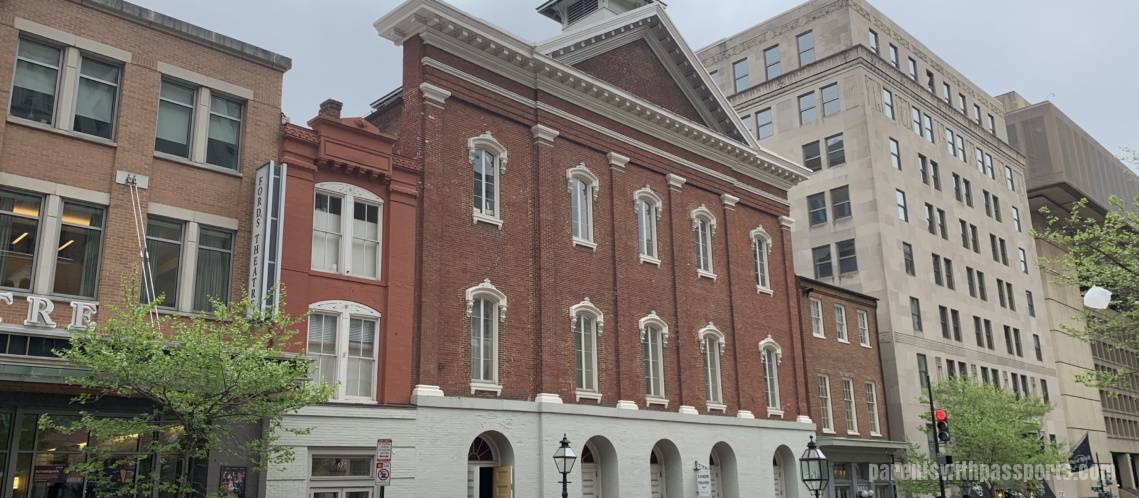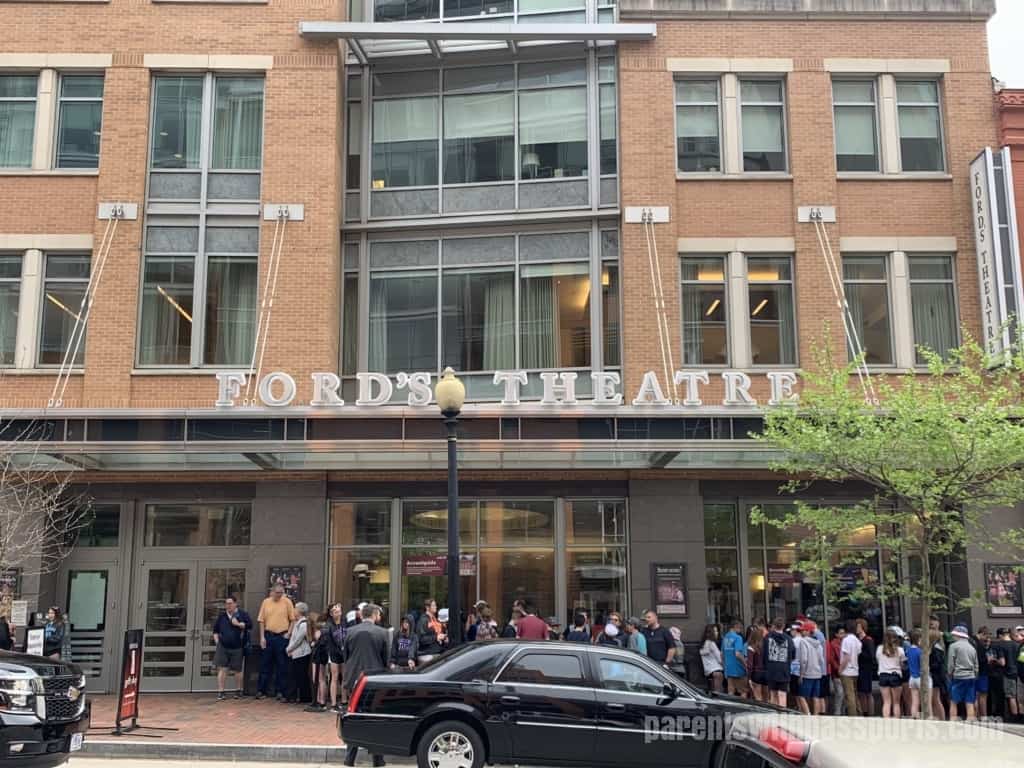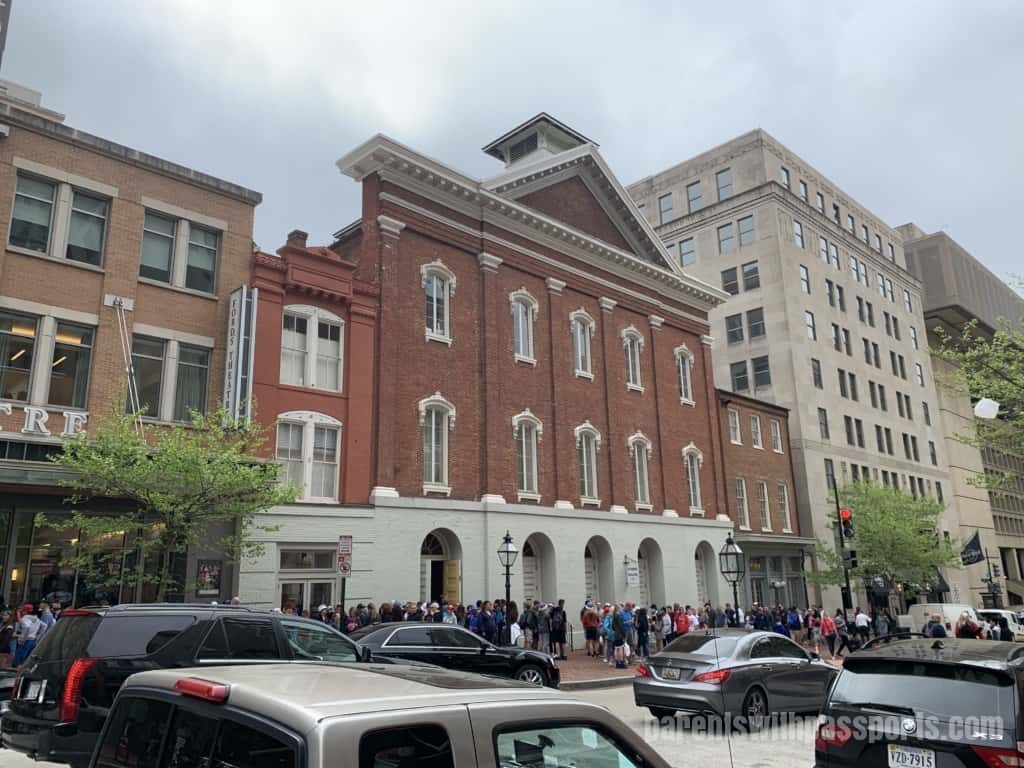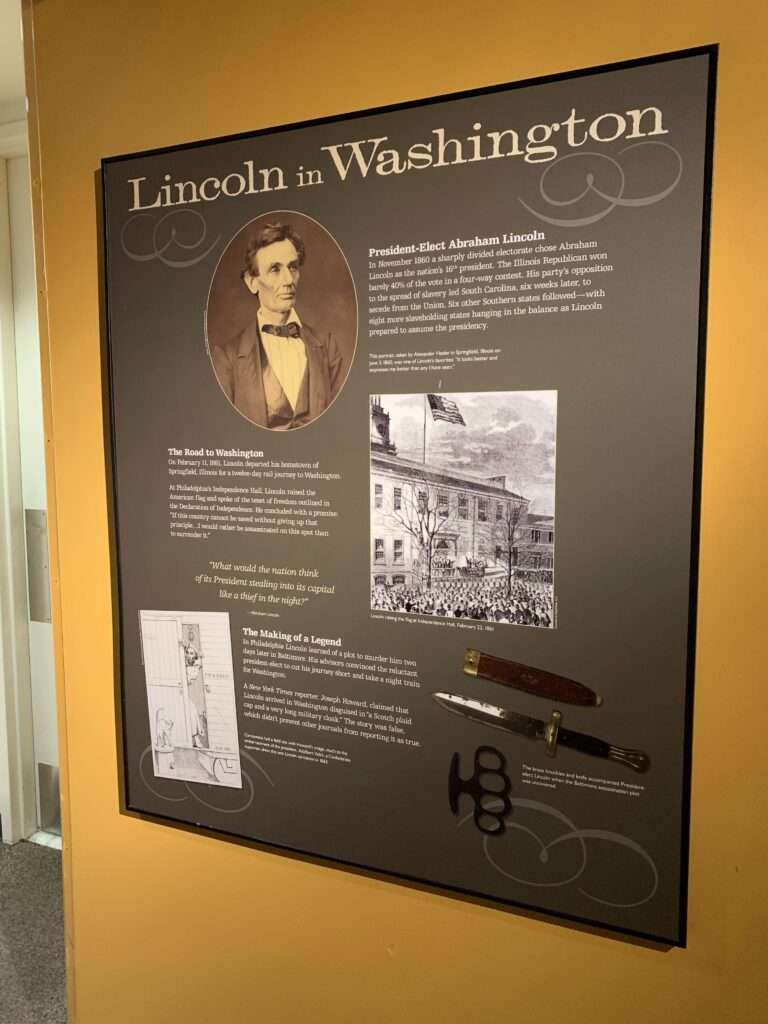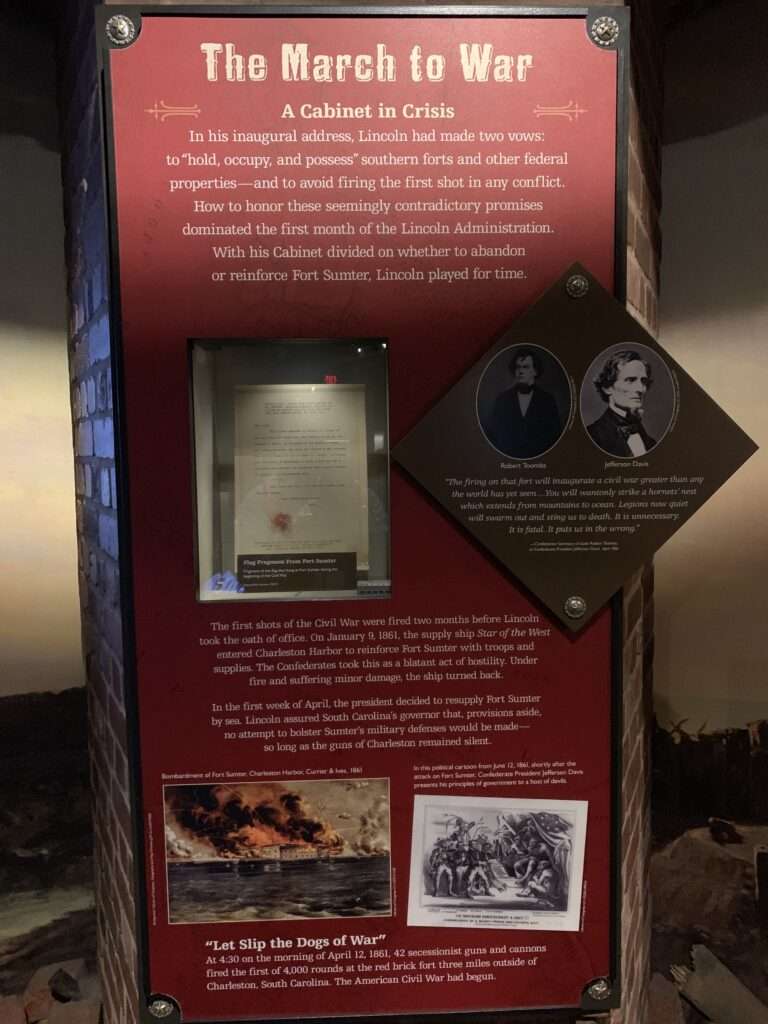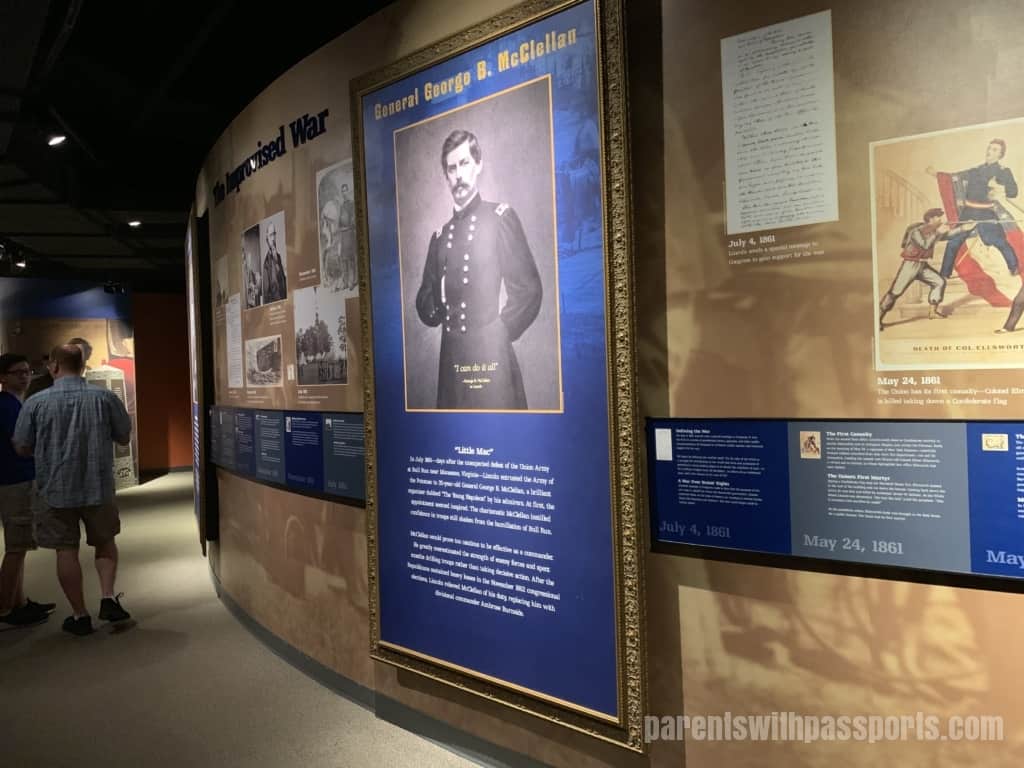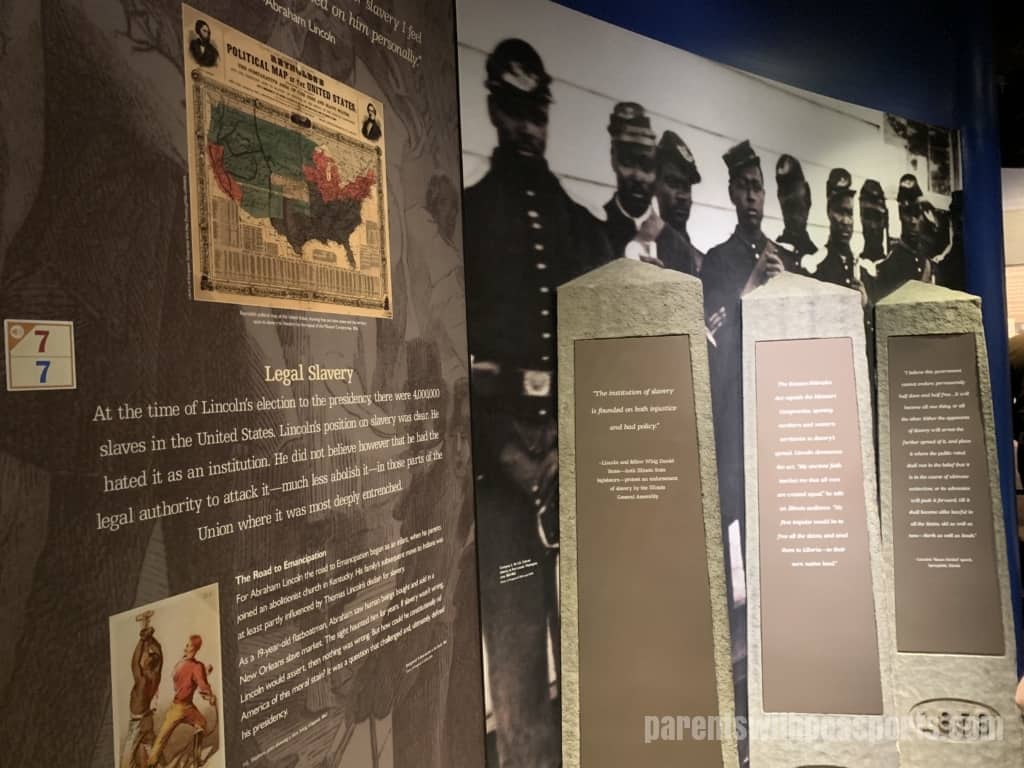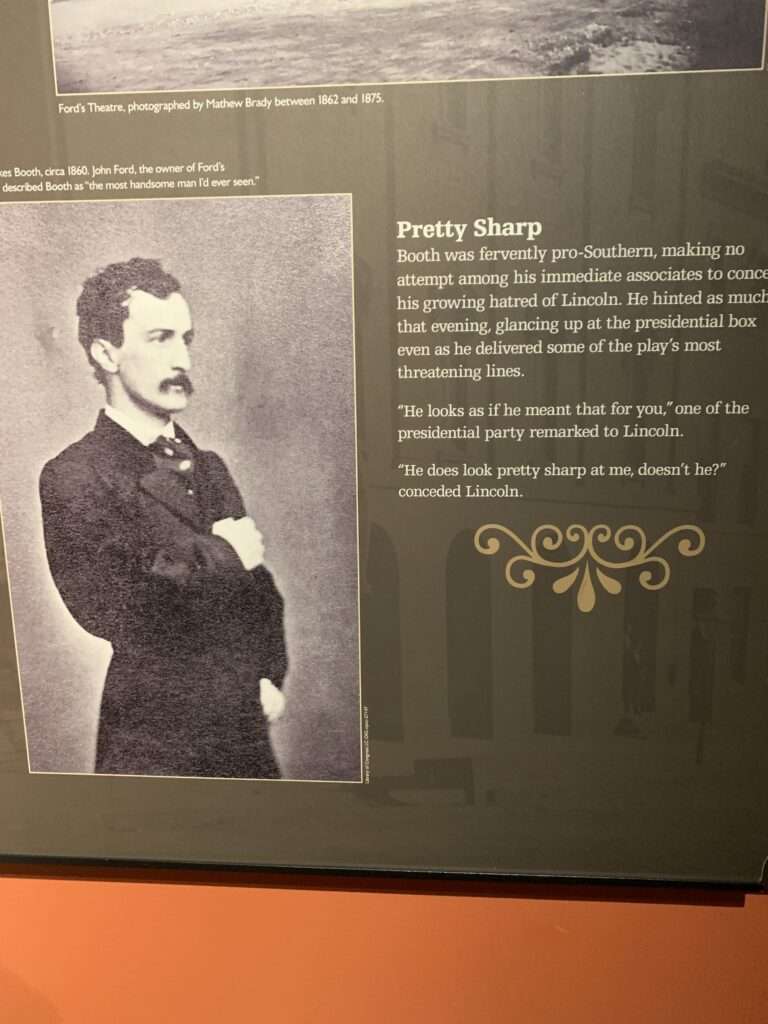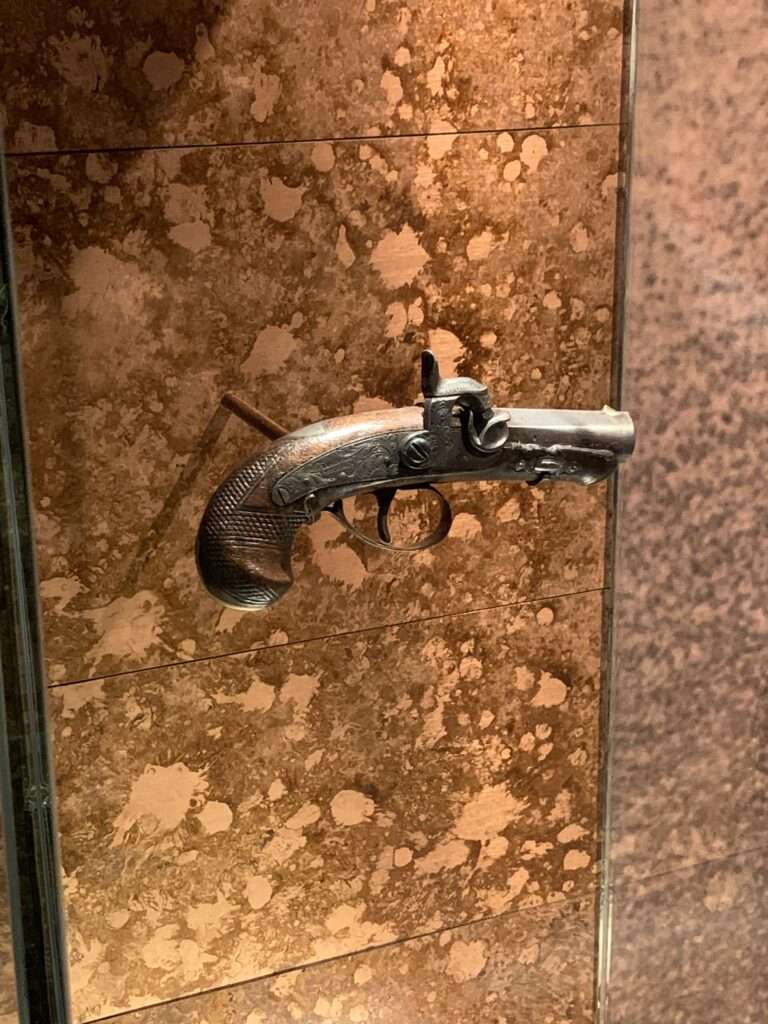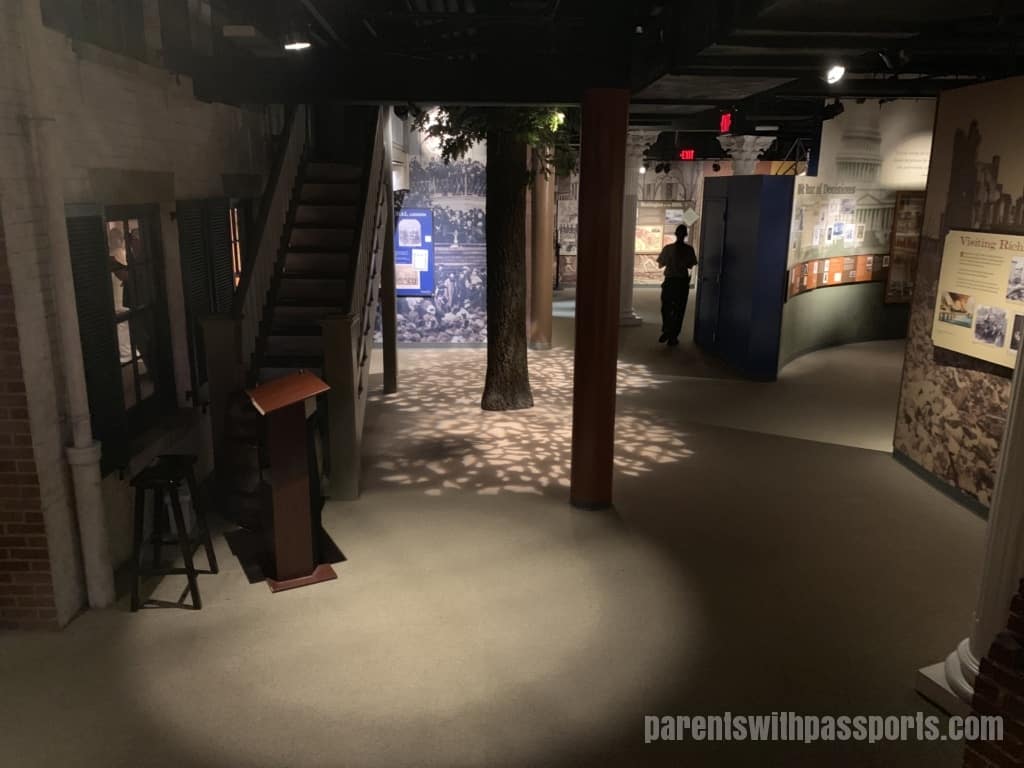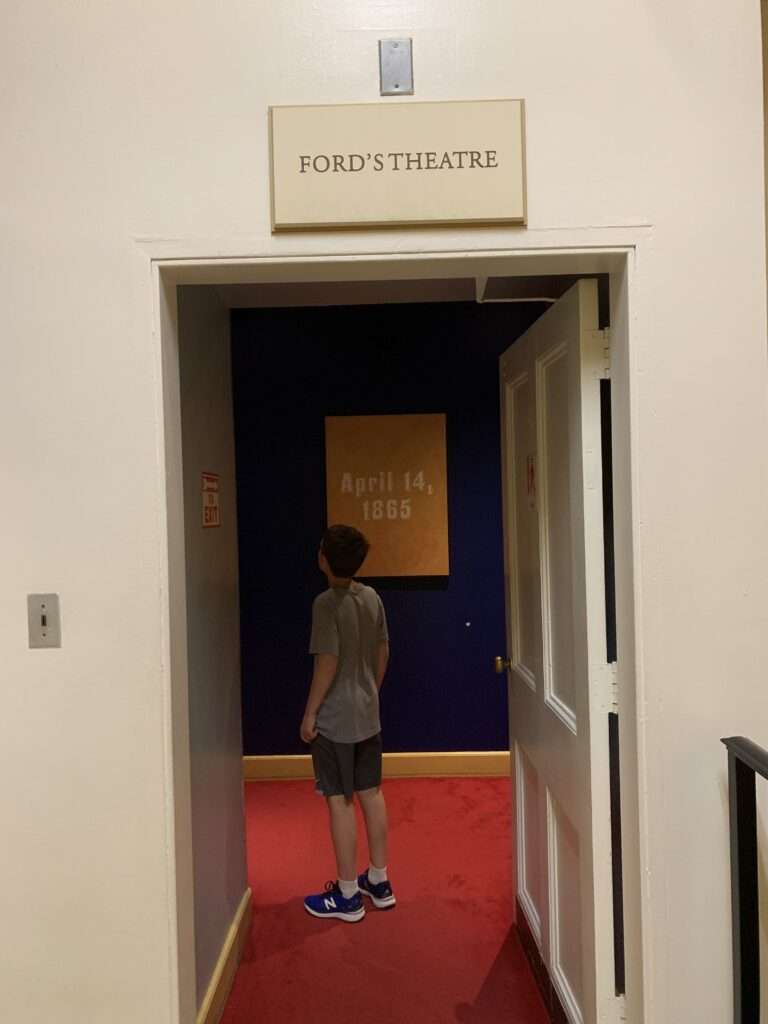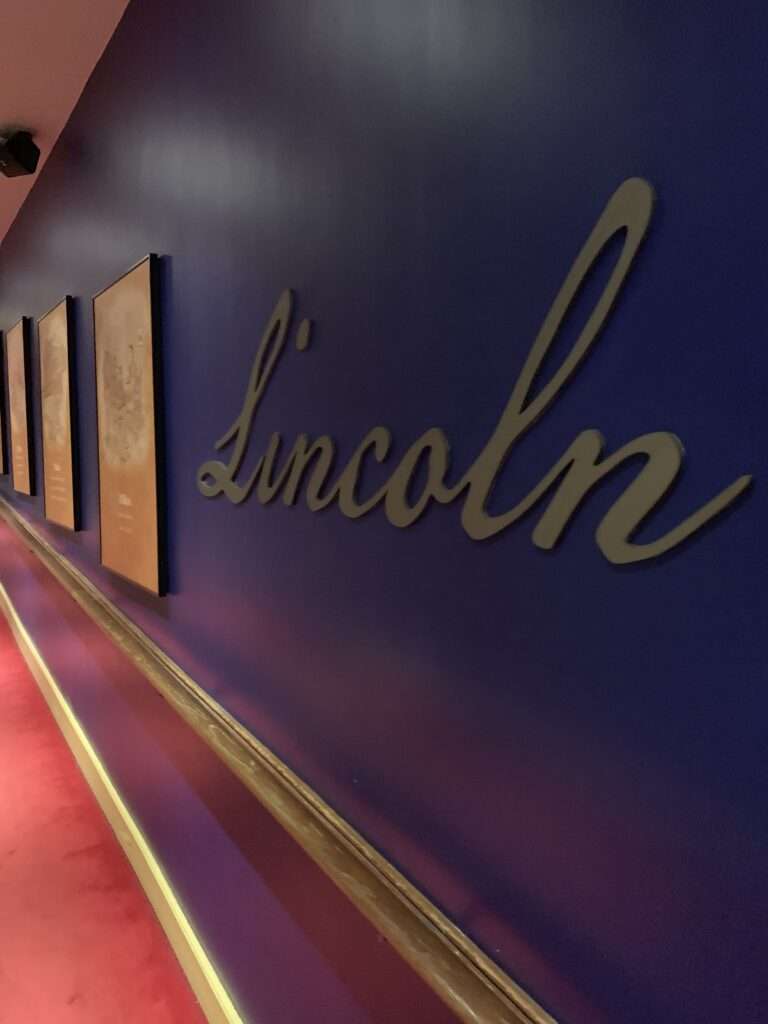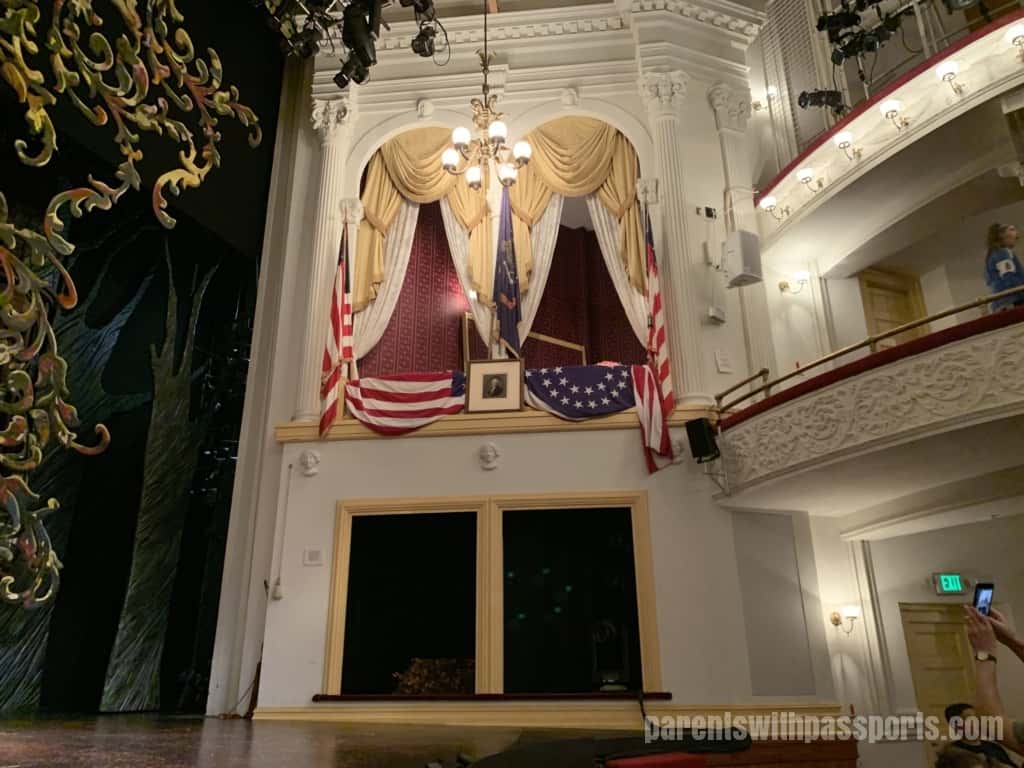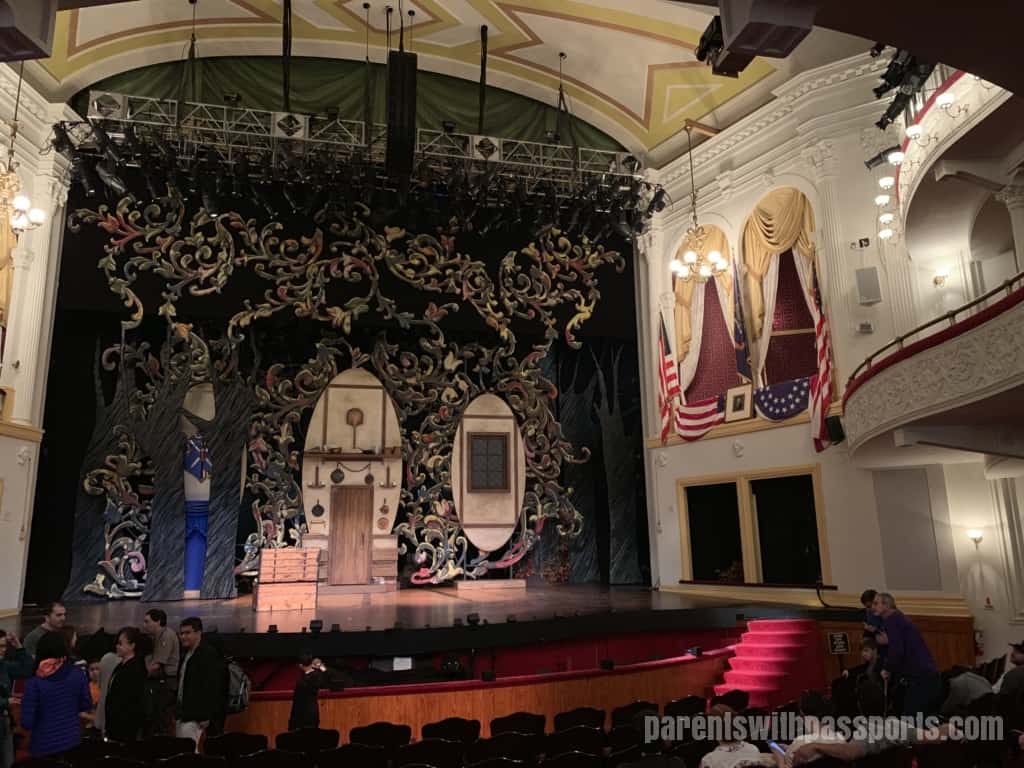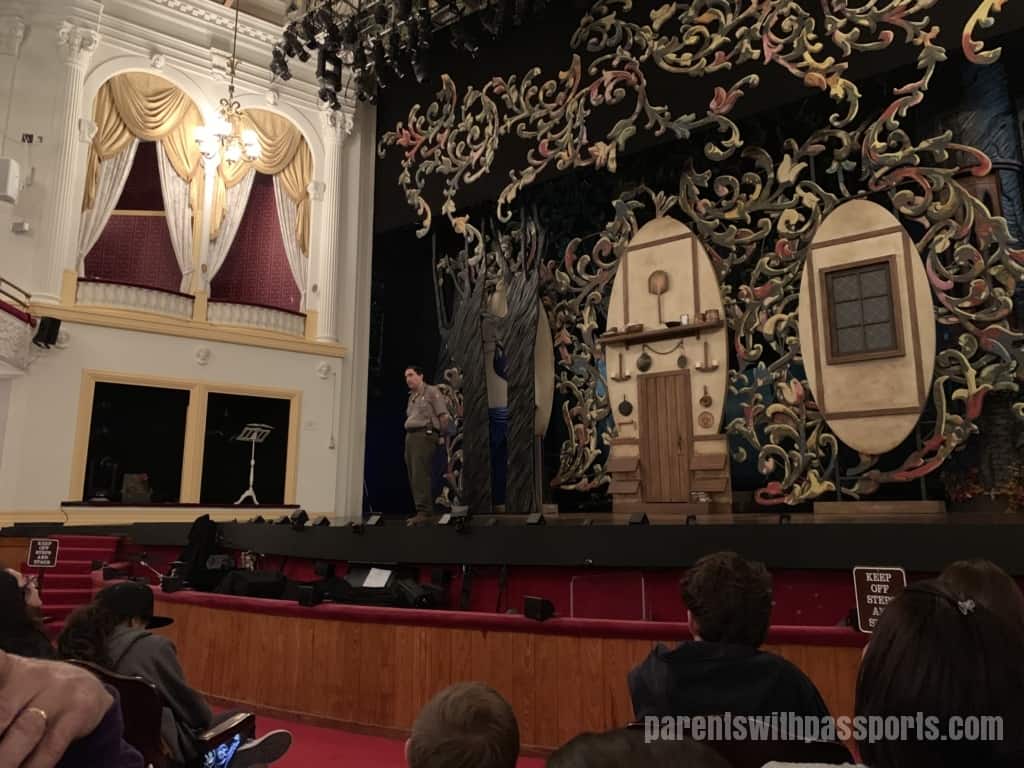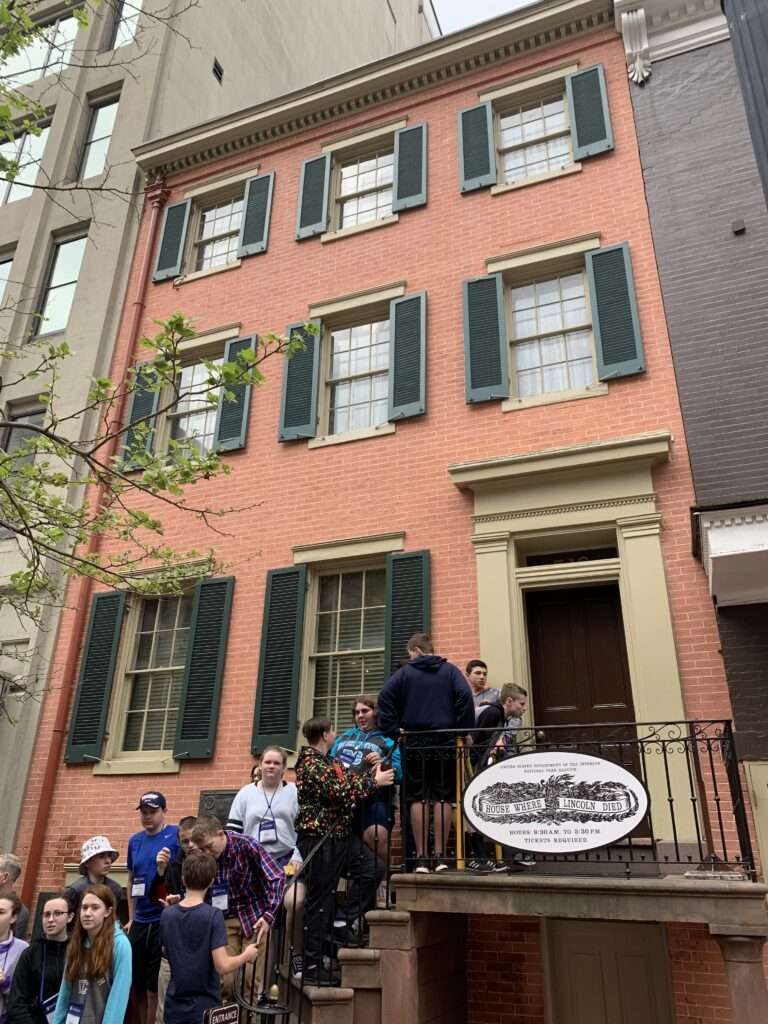Ford’s Theater is the site of President Abraham Lincoln’s assassination. It is a National Historic Site run by the National Park Service and is made up of four separate parts: the Theatre, the Museum, the Petersen House, and the Aftermath Exhibits. But part of what is unique about it is that it doesn’t just function as an historic site. It is also an active theatre. Amazingly, the same theater where Lincoln was shot is still used for live performances today. It must be a strange and unique experience to watch a show on the same stage that Lincoln was watching when he was shot and to sit just yards away from the box where the 16th president was sitting.
Timed-entry tickets are required to visit the historic site and it is recommended to buy them in advance. The tickets are cheap ($3 – $8) but highly confusing. Entry times are on the half-hour between 9am and 4pm, but not all tickets are the same. Museum entry and theatre entry are not included in all tickets so you have to pay attention to what you are buying. Additionally, when theatre entry is included, it can be either a Ranger Talk, a Walkthrough, or a short play. When buying online, every time slot has the 4 parts to the theater listed separately (Museum, Theatre, Petersen House, and Aftermath Exhibits) and specific experiences are crossed out if they are not available during that time slot. The museum and especially the Ranger Talk are well worth visiting, so I recommend buying a ticket that includes both of them.
Originally a baptist church, the building was reconfigured into a theatre by John T. Ford in 1861. “Ford’s New Theatre” burned in an 1862 fire and was reconstructed the following year. Lincoln was shot in the theatre on April 14, 1865 during a performance of Our American Cousin. The theatre never reopened after that fateful night and was sold in 1866 to the War Department, who turned it into an office building. The building became a National Historic Site in 1932 when the National Park Service gained control of it, and a small and largely unsuccessful museum was opened inside it. Starting in 1965, the building underwent major renovations to restore it to its original appearance and to improve its museum. It reopened in 1968 as both a national historic site and a working theatre.
Today, the building’s facade and its theatre closely resemble its 1865 appearance. The historic site has continued to expand and now occupies part of the adjacent office building, which is used as the site’s ticket office and lobby. When we arrived just prior to our ticket time, the line started at the ticket office’s closed doors and continued past the theatre and down the street. I was disappointed to learn that all of the people in line already had tickets too – I was hoping they were all waiting to buy tickets and there was a shorter line somewhere else for ticket holders. Alas, that was not the case so we joined the line, which started moving relatively quickly at our entry time.
Our tickets included museum entry so we walked across the lobby, into the theatre building itself, and down the stairs to the museum. Strangely, the museum in its early days didn’t focus on the assassination, but renovations in the late 1980s finally brought exhibits that addressed it. Today, the museum provides information about Lincoln from his presidency to his assassination, as well as information about his killer and co-conspirators.
The last section of the museum focuses on the assassination. There is some interesting background on John Wilkes Booth, including a story about a telling interaction between Booth and Lincoln years earlier, where Booth stared icily at Lincoln while reciting some threatening lines in a play. The pistol that Booth used to kill Lincoln is on display, as well as other relics of the conspiracy.
Overall, I thought the museum was well-done. It provides interesting historical perspective to go along with the personal narrative of the two key figures in the first assassination of an American President. My biggest complaint is that the museum was too dark. I’m certain the lighting was intentional but I personally found the dark areas too dark and thought the shadows created by the contrasting light made it difficult to read the displays.
Our ticket included the Ranger Talk and at some point an employee gave everyone a warning to start moving towards the theatre. We were one of the last groups to leave the museum. As we made our way through the door to the theatre hallway, we discovered one last exhibit, which actually turned out to be my favorite. (Had I known this exhibit was there, I would have left the main museum earlier to have more time to read it.) Connecting the museum to the theatre is a long hallway with bright red carpet and bright blue walls. Hanging on the walls are photographic displays that provide a chronology of the events on April 14, 1865, the day of the assassination. But the fascinating part is that the right hand wall follows President Lincoln’s day and the left hand wall follows John Wilkes Booth’s day. I thought it was such a brilliant idea to display how their days ran in parallel until the fateful moment that brought them together in the very theatre you were about to walk in to. It was a surprisingly powerful exhibit that instilled a sense of suspense as you walked into the place where their lives collided.
It was a strange feeling to walk into the theatre where Lincoln was assassinated and see the box where he was shot and then sit in a seat right below it. The theatre has been restored to its 1860s appearance, albeit with more comfortable seats and modern lighting. The stage itself was setup for the play that was currently running there, Into the Woods. Lincoln’s box remains decorated as it was the night he was killed, with an American flag and George Washington’s portrait on display.
If your ticket includes theatre entrance, it will specify one of three offerings: History Talk, Theatre Walkthrough, or One Destiny Play. The History Talk features a park ranger recounting the events of April 14, 1865. The Walkthrough is a self-guided tour which allows you to view the President’s Box from the balcony. And the One Destiny Play is a 35 minute show that tells the story of the night of the assassination from the perspective of two people who were there that night – actor Harry Hawk and theatre owner Harry Ford.
I had heard rave reviews of the play but it was not offered the days we were in town so we settled on the Ranger Talk. And we were not disappointed. I’ll be honest, when the ranger came out, stood in the middle of the stage and just started talking, it seemed like we might be in for a boring lecture. It was anything but boring. While the ranger was soft-spoken and not an especially dynamic speaker, he captured the audience’s attention and really brought that night to life. He was extremely knowledgeable and retold the events in an engaging manner. Even my youngest was impressed. He said “when he came out, I thought it was going to be really boring but I loved it!”
When he finished his talk, there was a sudden and mass exodus from the theatre. I had no idea what was happening. We heard seats bouncing back into their unoccupied position, and saw people running down the aisles and jumping over rows of seats. The theatre was empty in a matter of minutes and we were left wondering what we were missing. We walked outside and quickly discovered where all those people were going – across the street to the Petersen House.
Apparently those in the know dashed across the street to be first in line for the Petersen House, the boarding house where the badly wounded Lincoln was taken to and cared for until his death. Entrance to the House Where Lincoln Died is included in your ticket, but they time your entry with the end of the Ranger Talk (i.e. if you try to skip the talk and go straight to the house, you won’t be let in yet). Due to the small size of the house, they only allow a certain number of visitors in at a time, hence the rush to be at the front of the line. Since we were clueless and had taken our time exiting the theatre, the line was already around the block. One look at the line and all 4 boys immediately said they didn’t want to wait. I was disappointed but knew that making them wait and tour the house wouldn’t end well. So we cut our losses and headed to our next adventure.
We also skipped the last part of the historic site – the Aftermath Exhibits, where you can (according to www.fords.org) “Learn about the hunt for John Wilkes Booth, follow Lincoln’s funeral train and witness a nation in mourning”. This also looked to be an interesting museum that I was disappointed to miss, but the kids had done well and gotten a lot out of the first two parts of the site and there was no need to push it any further.
A visit to Ford’s Theatre with a timed ticket is fairly well orchestrated. We entered the site at 9:00 and were given a half hour in the museum. We were then ushered into the theatre for the half hour Ranger Talk. We could have then joined the line for the Petersen House. The website says the line moves quickly (we didn’t stick around to see) and that it takes roughly 20 minutes to tour the house. The website also says to plan to spend about half an hour in the Aftermath Exhibits. All told, you can expect to spend 2 – 2.5 hours at Ford’s Theatre if your ticket includes these four attractions.
My oldest son said Ford’s Theatre was his favorite thing we did in DC on this trip. I have to agree. It wasn’t something that was on my radar the first time we visited DC, partly because it is best for older elementary aged kids and up. But I was thankful that a friend who had recently visited DC tipped me off to this great site. It was educational and interesting, for the kids and adults alike. We would love to go back on a future visit to see the play and visit the Petersen House and the Aftermath Exhibits.
